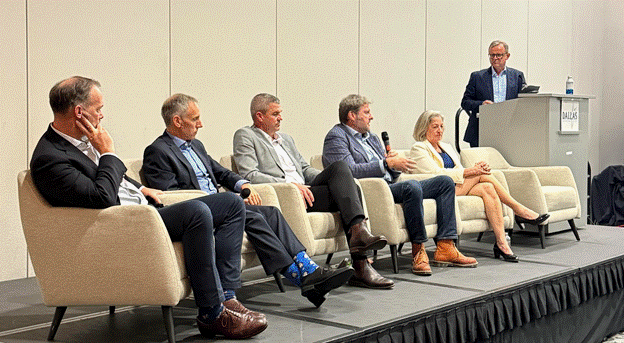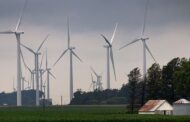As the US grapples with its own energy transition, what can we learn from global counterparts?
At DistribuTECH 2025, Edge Zero brought together a panel of Australian utility leaders to share how their market has navigated the complexities of renewable integration, distributed energy resources (DERs), and customer engagement.
The why: Australia is a “postcard from five years in the future” for the US, given its earlier moves towards widespread solar and other distributed generation.
Energy Central sat down with Andrew Linnie (Executive General Manager, Distribution, at AusNet), Guy Chalkley (CEO of Endeavour Energy), Mark Vincent (COO of South Australian Power Networks, or SAPN), and Edge Zero’s own Chairman and CEO, Richard McIndoe, to learn more about what the US can learn from Australia as it navigates the future.
Lesson 1: More solar, and quick
The energy trilemma—balancing affordability, reliability, and sustainability—has long framed the challenges utilities face. In Australia, though, additional forces are reshaping the landscape: power quality and energy security, driven by the rapid penetration of renewables and escalating weather extremes like wildfires and storms.
Those big problems require big solutions. One such solution, per the Australian execs? Community batteries, which enable utilities to manage the staggering volume of rooftop solar on their grids.
In just a few years, the Australian market went from about one in six homes with rooftop solar to one in three homes. “We didn’t have a choice. If we didn’t act, we were headed towards the state going black,” said Vincent. And seeing that growth slow didn’t seem feasible, either. “We don’t want to be the ones who see 60% or up to 80% of rooftops with solar in a given neighborhood and have to tell that next customer that they can’t install solar now because the rest of the street has it,” said Chalkley.
The rapid growth caught both utilities and regulators off guard, forcing them to adapt quickly to a reality where customer-owned generation is the norm. Their advice for US utilities: don’t rely solely on forecasts.
“Once [solar PV] reaches a certain attractive price point, it can and will blow your expectations away and the customer will drive adoption,” said Linnie. Forecasts rarely account for that pivot when adoption goes from a political statement to the financial norm and not recognizing that risks underselling and assume DERs will stay “emerging.” Instead, prepare now by setting standards, fostering community buy-in, and building flexibility into the grid, they cautioned.
Lesson 2: The Transition in Focus, from Regulator to Customer
A recurring theme at this year’s DistribuTECH was the increasing focus on customer-centricity in the utility industry, a shift that the Australian market has embraced wholeheartedly already. The panelists pointed out a stark difference between the US market and Australia’s approach: While American utilities often prioritize regulatory approval, Australian utilities face intense pressure to focus on affordability and customer expectations.
“I listened to one Texas business yesterday describe a multi-billion-dollar resilience spend report that would only cost customers $7 per month,” recalled Vincent. “But we would get intense pushback even if we told customers we planned to increase the distribution proportion of their bills by $7 per year. So, it’s a different context and different approach.”
This customer-first mindset has driven Australian utilities to rethink their metrics of success. Chalkley, for example, said, “none of my personal KPIs are regulatory, mine are focused on customer engagement, safety, and employee engagement.”
McIndoe agreed: “At this conference, we’re seeing so many companies describe themselves as wise businesses, but instead it’s imperative to recognize it’s not the wisdom of businesses driving shifts, it’s actually customers and technology driving the transition.”
Lesson 3: Embrace a Bold Vision for the Future
The bottom line, according to these execs: The energy transition isn’t waiting. US utilities must act now to prepare for a future where DERs, customer empowerment, and climate resilience are no longer optional but essential.
These bold visions for the future were also echoed on the panel these executives shared on a joint panel while at DistribuTECH, which can be heard here. “In a decade’s time, the network will be a trading platform,” said Chalkley. “Don’t underestimate the value of the data on it. While you’ll see a physical network, the unseen data will be the real value. It will be a true trading platform, evolving similarly to financial systems working in partnership with the customer.”
And reflecting on the future of generation coming largely from residential customers, Linnie said “Flexibility isn’t a nice-to-have; it’s a must-have.”
“It’s not a matter of if but when these changes will come. And you won’t get everything right, but be bold and look forward,” McIndoe said.
All week, Energy Central is publishing our series of conversations from DistribuTECH 2025. You can see them all as they go live at this landing page.
Other published interviews:











